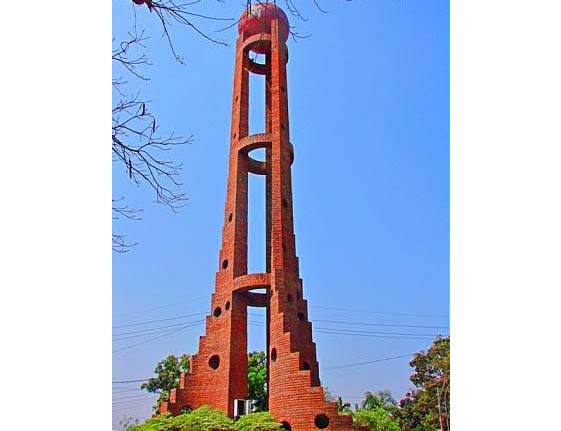RAJSHAHI, March 5, 2019 (BSS) – The overall situation in the city of
Rajshahi became volatile with the spontaneous protest of general masses from
initial stage of March in 1971 when the then Pakistani rulers had postponed
the scheduled March 3 session of National Assembly.
Postponement of the scheduled parliament session by the Pakistani ruler,
as part of a heinous conspiracy, instantly turned the Rajshahi people
revolutionary since the beginning of March in 1971 with spontaneous protest
of the common people.
Father of the Nation Bangabandhu Sheikh Mujibur Rahman rejected
cancellation of the scheduled parliament session from March 3 and called
strike on March 2 in Dhaka and on March 3 throughout the country.
Recalling the situation of that time, Advocate Abdul Hadi, former mayor
of Rajshahi City Corporation, said thousands of people came out on the
streets spontaneously under the banner of Sarbadaliyo Chhatra Sangram
Parishad and Shramik Sangram Parishad.
“The people demonstrated their protest and demanded immediate handover
of power to Awami League, the party which secured great majority in 1970
general election,” he said.
Public and private offices and business activities came into a total
halt, academic activities of the educational institutions were suspended
while production in mills and factories throughout the city remained stopped
for an indefinite period. It was part of a spontaneous protest that turned
the city into a place of fierce movement and demonstrations.
Total general strike was observed in the city paralyzing the civic lives
and business activities.
To gear up the movement by cashing the hit generated in the political
field, cross-section of freedom-loving people took out series of processions
on eight-kilometer road from Rajshahi University to Rajshahi court breaking
curfew on March 3 in conformity with the central programmes.
The Independence-seeker Bangalees paraded the city streets here chanting
slogans ‘Jago Jago Bangalee Jago’, ‘Beer Bangalee astro Dhoro, Bangladesh
Swadheen koro’.
At around 11.30 am on the same, the then occupation forces from the
adjacent Telephone Exchange Building opened fire targeting a procession in
Ranibazar area killing at least one person and injuring many others.
The brutal attack and killing of innocent people had fuelled fiery minds
of the protesting people and the movement got new momentum with more vigorous
protest at city’s most of the parts and district.
During the Liberation War, Rajshahi witnessed both great atrocities by
the Pakistan army and heroic struggles by the freedom fighters.
The largest mass grave in Bangladesh is located in Rajshahi University,
which was used as Pakistani army camp during the Liberation War of 1971,
recalled by valiant Freedom Fighter Dr Abdul Mannan.
On the other hand, one of the biggest great battles of the Liberation
War took place near Rajshahi. Captain Mohiuddin Jahangir, who died in the
battle, was awarded the highest honour (Bir Shrestho) by the Bangladesh
government after the war.
Contribution in the war of independence began from the massive movement
in 1969 to protest the illegal and unlawful tyranny of the Pakistani
government, the students of the university became furious.
On February 18, 1969 the students of the university broke out a protest
procession where the police force took preparations to shoot at the
procession. The then Proctor and professor of the Chemistry Department Dr
Shamsuzzoha laid down his life to save the students from the bullet pierced
by the then Pakistani law-enforcing agency.
During the Liberation War, Rajshahi University teachers, officials and
students played an imperative role to free the country from the Pakistani
forces.
The Shabash Bangladesh Chhattar, martyr archives, mass grave yard, and
tombs of Dr Shamsuzzoha, Sukhrojjon Samaddar, Mir Abdul Qaiyum and Shaheed
Habibur Rahman and presence of the existing freedom fighters make it a
glorious one.



